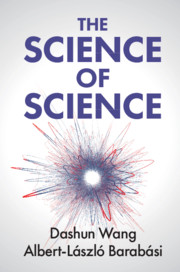Book contents
- The Science of Science
- The Science of Science
- Copyright page
- Dedication
- Contents
- Acknowledgements
- Introduction
- Part I The Science of Career
- Part II The Science of Collaboration
- Part III The Science of Impact
- 15 Big Science
- 16 Citation Disparity
- 17 High-Impact Papers
- 18 Scientific Impact
- 19 The Time Dimension of Science
- 20 Ultimate Impact
- Part IV Outlook
- Book part
- References
- Index
16 - Citation Disparity
from Part III - The Science of Impact
Published online by Cambridge University Press: 07 February 2021
- The Science of Science
- The Science of Science
- Copyright page
- Dedication
- Contents
- Acknowledgements
- Introduction
- Part I The Science of Career
- Part II The Science of Collaboration
- Part III The Science of Impact
- 15 Big Science
- 16 Citation Disparity
- 17 High-Impact Papers
- 18 Scientific Impact
- 19 The Time Dimension of Science
- 20 Ultimate Impact
- Part IV Outlook
- Book part
- References
- Index
Summary
We begin by acknowledging the sheer size of the citation index to date, and then discuss the disparity in citations that these papers receive. These differences in impact among papers can be captured by a citation distribution, which can be approximated by a power-law function. We compare power-law distributions to Gaussian distributions, illustrating the distinctions between the two and what they tell us about citation patterns. We then explore the differences in average number of citations between fields, which can make cross-disciplinary comparisions complicated. Luckily, we find that citation patterns are surprisingly universal relative to the field a paper is published in, which allows us identify common trends in citation and impact regardless of discipline. We end with a discussion of what citations don’t capture, given that they are frequently used as a proxy for impact. We pinpoint some potential flaws in this metric, but see citation patterns as a valuable way to gauge the collective wisdom of the scientific community.
Keywords
- Type
- Chapter
- Information
- The Science of Science , pp. 174 - 183Publisher: Cambridge University PressPrint publication year: 2021



